2020 Yamaha Tenere 700 Review - First Ride

The Tenere 700 is finally here. almost
[Editor’s Note: Yamaha contacted MO to say that the model tested here is the 2020 European spec Tenere 700. When the Tenere comes here to the U.S., it will be as a 2021 model, the specifications of which have not been finalized and, consequently, may be different. The kind folks at Yamaha just wanted to give us an early test of the European model because we had been waiting so patiently for the Tenere 700 to arrive.]
2021 Yamaha Tenere 700
| Engine | 19.0/20 |
| Suspension/Handling | 14.0/15 |
| Transmission/Clutch | 8.75/10 |
| Brakes | 7.5/10 |
| Instruments/Controls | 3.75/5 |
| Ergonomics/Comfort | 8.0/10 |
| Appearance/Quality | 9.25/10 |
| Desirability | 9.5/10 |
| Value | 9.0/10 |
| Overall Score | 88.75/100 |
When ol’ Brasstacks hit me on the mobile to assign the Yamaha Tenere 700 press launch to his favorite employee, a few things didn’t add up. The event was two weeks out, it was international, but he didn’t remember where, and most curious, the fact that there was a launch happening at all for the motorcycle we’ve been teased about for nearly three years. Oh, and it was April 1. Yeah right, EvB. Funny stuff. “You’ll get the email tomorrow,” he said. Well, twenty-four hours later, I had no email and dismissed his assignment as a cruel April Fool’s joke. Two days later the email came through. I would be heading to the south of Spain to test the 2021 Yamaha Tenere 700 in May. Evans had the dates mixed up and I’ve never been more stoked to be wrong.
The Tenere, as we know it today, has a long and storied history dating back to the 1982 Paris Motorcycle Show, where the XT600 Tenere was unveiled. Building on the rally racing success of the XT500, the XT600 Tenere was built to contend with the increasing speeds and sizes of motorcycles competing in the world’s rallies of the day. This development was championed by Jean-Claude Olivier, who at the time was not only competing in the Paris-Dakar himself, but also working for Yamaha’s French distributor, Sonauto, and would later become president of Yamaha Motor France. JCO, as he was known, saw the potential in the Tenere for Yamaha not only on the race course but also in the international market as motorcyclists around the world began to dream of exotic rallies and the endless horizons to which these motorcycles could take them. An immensely passionate man, Olivier can be credited with the development of the adventure category for Yamaha.
The word Tenere comes from the North African languages of Berber and Tuareg meaning “desert”, “wilderness”, and “solitude”. Yamaha chose to use the name from the Tenere region of the Sahara desert which spans Niger and Chad and was part of the original Paris-Dakar Rally. The vast, dry, sandy expanse would become known as an infamous stage of early Paris-Dakars due to its notorious sandstorms and challenging terrain. As the original Tenere was developed to be a true off-road machine, the development of the new Tenere 700 follows in its footsteps. Yamaha says its development priorities for the new middleweight adventure bike were to be pure, fun, sporty, and light. In Spain, over the following two days, we were given the opportunity to test the Tenere 700 on- and off-road to evaluate the company’s claims and to bring our readers a first ride review of the highly anticipated 2021 Yamaha Tenere 700.
Motor
The Yamaha Tenere 700’s 689cc Parallel Twin engine is borrowed from the wildly successful MT-07 and XSR700 models. From the first time we had the chance to ride these motorcycles, we were sure the motor would be an excellent powerplant for an adventure bike. The punchy and torquey low- to mid-range power is addicting in these roadsters. Yamaha obviously felt the same because the CP2 engine in the Tenere 700 remains unchanged from the aforementioned models.
Of course, there were changes to how the Tenere’s Twin breathes and eats. The airbox, exhaust, and ECU mapping have all been tweaked to give even more mid-range torque while still delivering plentiful grunt down low, allowing the bike to tractor its way up through the rev-range. The motor is easy to run a gear high knowing that you can roll on the throttle at low rpm to be greeted with smooth powerful acceleration. Our off-road riding was kept to gravel roads big and small with varying amounts of large embedded rocks; letting the motor lug into hairpin corners and then getting on the gas at the surprise uphill ascent around the bend was no problem for the Tenere’s Twin.
Even at overrev, the CP2 engine delivers smooth predictable power. This, Yamaha explains, is why they chose not to include traction control or any other rider aiding electronics on the Tenere 700 aside from ABS, which is switchable on or off. After riding the Tenere for nearly 300 miles across varying terrain, I didn’t think twice of its absence. The strong predictable delivery of power is easy to modulate. Still, for those looking at the value proposition or perhaps less experienced riders, some will undoubtedly balk at the exclusion of traction control or ride modes. Again, I personally didn’t miss them, and for alumni of the old school, more electronics equals more potential for disaster.
The “stacked” six-speed transmission works well. Shifts are positive, and the only time I missed one was due to my own half-hearted pressure at the shifter. Like the MT-07 and XSR700, the Tenere 700 doesn’t come with a slipper clutch of any kind, and while that may ensure consistency in feel, in this day and age of motorcycling, slipper clutches are advanced enough to make that a tough argument. Gears are evenly spaced, and combined with the torque the CP2 is spitting out, one can be lazy with gear selection. The final drive ratio of 15/46 favors torque over the more street-focused roadster models. While fueling is very well-tuned on the Tenere 700, there is a fair bit of driveline lash when rolling the throttle back on. So much so that during our test ride through sinuous Spanish single-lane roads, a touch of clutch modulation was required to keep the Tenere from lurching forward when getting on the gas.
Chassis
The Yamaha Tenere 700’s frame is an entirely new development designed to be slim and light, yet strong, while delivering natural handling and comfortable rider ergos. Made from high-tensile steel, the Tenere’s frame features removable downtubes which help protect the motor and can be replaced if damaged. I might have liked to see a bolt-on subframe as well, which, in the event the rear of the bike receives some significant damage, riders would be able to purchase just that piece, rather than being stuck with the entire frame trashed.
Yamaha’s long-standing relationship with KYB outfits the Tenere 700 with a 43mm fork delivering 8.3-inches of travel, which is adjustable for compression, rebound, and preload. The KYB shock delivers 7.9-inches of travel and features a remote preload adjustment knob that’s easily accessible, as well as offering rebound tuning, though no compression adjustment is provided. The ability to tweak the Tenere’s suspension will give most riders the ability to get their ride set up how they like. The suspension does a good job on pavement while still soaking up rocky terrain and small jumps with ease. Overall, I would call the suspension comfortable, not overly sporty on- or off-road, but capable in a wide variety of situations.
Naturally, as a bike whose lineage includes prototype rally racers should, the Tenere 700 is outfitted with spoked tube-type 21- and 18-inch wheels. A nice option when considering the amount of off-road focus the new Tenere is positioned for. The bikes we rode were fitted with Pirelli Scorpion Rally STR tires, though there’s a chance this may change for North American-destined models. This among other details, will be announced in about a year’s time. One can expect something similar if the Scorpions can’t make the swim across the Atlantic. Another advantage, aside from the natural compliance and off-road character of the 21/18-inch wheel combo, is that it gives riders the opportunity to choose from a wide range of tires from mile-crunching touring rubber to trail-trouncing meats.
Braking components are provided by Brembo both front and rear. On the street, the Tenere’s dual 282mm rotors are slowed easily by the two-piston Brembo calipers, and while they don’t offer superbike feel, they get the job done. Off-road is a different story. The feeling is somewhat vague, which combined with a fairly touchy lever, is hardly confidence inspiring. And then there’s the rear brake. A light switch offers better modulation than the Tenere’s rear brake. The single piston Brembo caliper is plenty capable of locking up the rear. Of course, the rear, and the front for that matter, will only lock with the ABS system disabled. There are two modes: on or completely off, both front and rear. In order to enable or disable the system, the motorcycle must be stopped and the dedicated button located on the LCD dash’s housing must be pressed for approximately five seconds. That’s all fine and dandy for disabling the system, and likely a suggestion from the lawyers, but I would’ve liked to be able to enable ABS on the fly. As you may already expect, the braking system reverts to street mode (on) when the key is cycled.
Ergos and Stylin’
The Yamaha Tenere 700 looks bitchin. In my opinion, it looks better than the concept – aside from the knobbier tires and trick rally bits – and very similar to the World Raid prototype which teased its way around the globe in the hands of off-road legends. The bike has a svelte and sporty presence while imbuing the look of a proper rally machine into a production motorcycle. From the bodywork and large clear windshield/fairing to the long flat seat, the Tenere 700 certainly looks the part of a Dakar-ready machine.
In reality, the bike does feel nimble and light but not quite as much as it looks. When seated, the Tenere 700 has a perfectly neutral rider triangle, offering all-day comfort and a surprising amount of wind protection from the tall but narrow windscreen. The seat, while it might look like a flat 2×4-esque dirtbike bench from afar, is plush and wide enough for multiple long days in the saddle. Where the Tenere 700 loses ergonomic points is while standing.
Overall, the rider triangle is still in all of the right places while standing, but the width of the bike around the tank and the engine was a bit of a surprise. I like to be able to “choke up” onto an adventure bike when riding in sandy or rocky conditions or simply while cornering to put more weight over the front wheel. Although the bike offers room to move around, the width of the 4.2-gallon tank between the knees doesn’t allow the rider to move forward very far. Furthermore, down at the right boot, the clutch cover and the protective plastic shield for the clutch’s actuation lever were pushing my right foot out and away from the rear brake pedal causing an awkward feeling of reaching my toes back beneath the protruding engine case to get to the rear brake. A set of rally footpegs, like the set I installed on the KTM 1190, would be one of my first purchases if I found myself with a new Tenere 700 in the garage, probably some sort of elongated brake pedal while we’re at it, too.
While I have my nitpicks about the girth of the Tenere 700, there are a number of features found around the bike that are well-thought out and functional. Starting at the top, above the LCD instrument panel sits a crossbar to allow riders to attach a GPS, phone, or whatever other bit of tech one might find the need to have front and center. Below the screen to the left, sits a 12v outlet ready to keep your tech charged while you’re on the move. Moving down the fork legs, one will notice the large bolts connecting the fork guards and front fender. These allow the height of the fender to be adjusted should you find yourself in a sloppy situation. Throughout the bike, there are various covers to protect sensitive bits like the sidestand switch – a part I managed to crush on the Kawasaki Versys while boulder crawling, rendering the bike unable to start without some wire splicing – as well as forged aluminum footrest brackets which hide otherwise vulnerable electrical components. The handguards and skid plate are appreciated, as is the grab area near the rear fender, should you find yourself needing to move the bike around manually.
Hurry up and (keep) wait(ing)
And now for the news no one wants to hear. For North Americans curious about the Tenere 700, we won’t see Yamaha’s middleweight adventure bike land on our shores for approximately one more year. You read that correctly, and I’m sorry. We’re told pricing should be comparable to current European pricing which would put the US MSRP around $10,500. When prodded about the North American delivery of bikes, particularly due to them being available in Europe as soon as July 2019, Yamaha reps cited varying regulations and emissions standards worldwide for the delay. European models will be built in France while manufacturing for the rest of the world, including the U.S., will take place in Japan. Details such as pricing, color options, tire fitment, and accessory availability will be confirmed around June 2020.
Just a tease
Although I had the opportunity to ride the 2021 Yamaha Tenere 700, I too have still been left feeling blue. The press ride, though we covered plenty of ground and had plenty of exciting action on the street, was a little bland in terms of off-road. Much of our time was spent on varying widths of gravel roads or trails without the opportunity to test the Tenere 700 on anything more technical than the odd stretch of jagged embedded rock. To some, that may be more or all they are interested in doing, but to me, I believe the bike is capable of much more. We barely scratched the surface of the Tenere 700’s potential. I can confirm the bike is loads of fun on the street with the gyroscopic forces of the 21-inch front wheel and the adventure tires hardly dampening our spirited street ride. Off-road, the bike is stable and predictable at speed with the torquey engine ready to break traction at a twist of the wrist, but there is more to the Tenere’s story.
It pains me to know that I won’t be throwing a leg over the Tenere 700 any time soon because I really can’t wait for a proper adventure comparison between the increasingly stacked middleweight adventure market. Yamaha and KTM both have brought contenders with serious off-road intentions to the middleweight class and I, like you, cannot wait to see how they shake out when compared side by side. What I can say with absolute certainty is, there will be an ADV bike to suit everyone’s tastes of adventure when the Yamaha lands. There has never been a better time to start exploring the next horizon.
2021 Yamaha Tenere 700
+ Highs
- Rally aesthetic
- Exciting engine
- An agreeable (projected) price point
- Potential for serious off-road duty
– Sighs
- Deceptively girthy
- No “gimmicky” electronics
- Still. Not. Here.
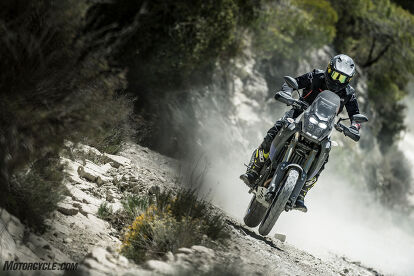
Helmet: Fly Carbon MIPS Shield $299.95
- Jacket: Alpinestars Venture R $219.95
- Pants: Alpinestars Venture R $149.95
- Gloves: 100% Airmatic $44.95
- Goggles: Fly Zone Pro $64.95
- Armor: Alpinestars Bionic Pro $239.95
- Knee Braces: Asterisk Ultra Cell $759.05
Boots: Sidi Crossfire 3 $599.95
2021 Yamaha Tenere 700 Specifications | |
|---|---|
| MSRP | $9,999 |
| Engine Type | 689cc liquid-cooled, DOHC, Parallel Twin four valves per cylinder |
| Bore and Stroke | 80mm x 68.6mm |
| Compression Ratio | 11.5:1 |
| Rear Wheel Horsepower | 72.4 hp @ 9,000 rpm (claimed) |
| Torque | 50 lb-ft @ 6,500 rpm (claimed) |
| lb/hp | 6.2 |
| lb/torque | 8.9 |
| Transmission | 6-speed; wet multiplate clutch |
| Final Drive | Chain |
| Front Suspension | KYB 43mm inverted fork, fully-adjustable; 8.3-in travel |
| Rear Suspension | KYB Single shock, adjustable preload (w/remote adjuster) and rebound damping; 7.9-in travel |
| Front Brake | Brembo Dual 282mm hydraulic disc; selectable ABS (on/off) |
| Rear Brake | Brembo 245mm hydraulic disc; selectable ABS (on/off) |
| Front Tire | 90/90R21 Pirelli Scorpion Rally STR |
| Rear Tire | 150/70R18 Pirelli Scorpion Rally STR |
| Rake/Trail | 27.0 deg/4.13 in |
| Wheelbase | 62.8 in. |
| Seat Height | 34.6 in. |
| Curb Weight (Claimed) | 449.7 lbs. |
| Fuel Capacity | 4.2 gal. |
| Colors | Ceramic Ice (other colors TBD) |
| Warranty | Warranty 1 Year (Limited Factory Warranty) |

Ryan’s time in the motorcycle industry has revolved around sales and marketing prior to landing a gig at Motorcycle.com. An avid motorcyclist, interested in all shapes, sizes, and colors of motorized two-wheeled vehicles, Ryan brings a young, passionate enthusiasm to the digital pages of MO.
More by Ryan Adams





























































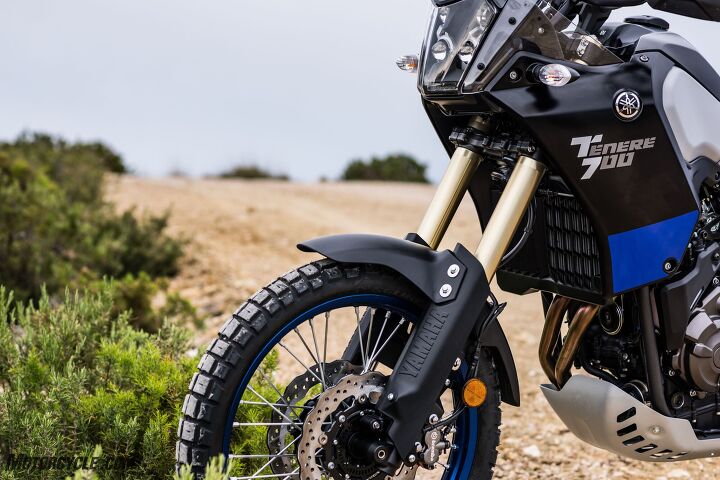
































































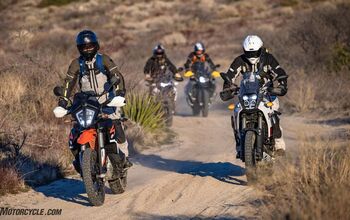

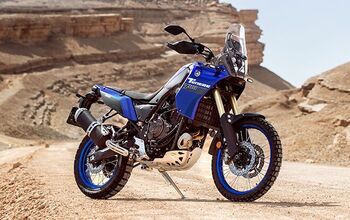
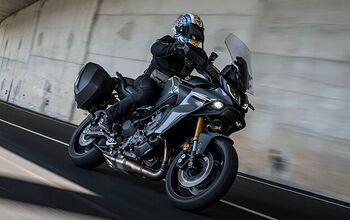













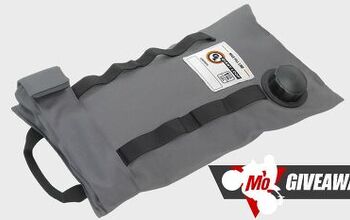
Comments
Join the conversation
All that potential- and they deliver a twin cylinder KLR.
Which is fine- but something you'd think they could have banged out in 20 minutes 3 years ago.
Yamaha forgot the beak! How does this bike function off-road without a beak? Is that possible? Is it allowed? Are beakless off-road bikes the future?